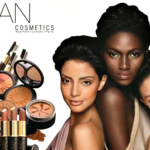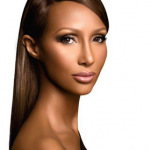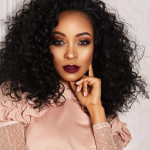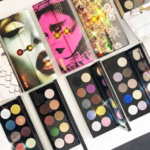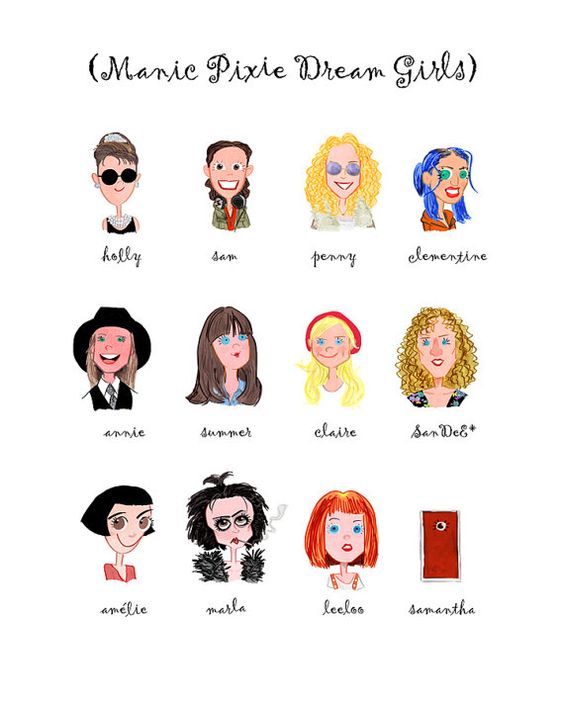By: Emily Cioch, Eleni Constantinou, Morgan Farrar, and Vartika Govil
Abstract
Anxiety is defined as a strong emotion or feeling that causes an individual to fear an event either in the present or in the future. This type of fear is often illogical and induces a number of symptoms, including increased heart rate, dizziness, and sweating. The causes and sources of anxiety, which is statistically more common in women than men, have evolutionary origins. In the Environment of Evolutionary Adaptedness (EEA), individuals feared stimuli such as venomous snakes, which threatened the viability of humans. The anxiety-like behaviors needed for survival in the EEA are in an evolutionary mismatch with current industrialized societies. Additionally, due to hunter-gatherer models present today, women in the EEA likely experienced higher levels of fear and anxiety-like symptoms in order to remain sensitive to their environment and protect themselves and their children. We propose that, due to the change in technical, professional, and personal expectations and stressors that women experience today, this predisposition to fearful thought has been over-amplified to produce chronic anxiety in women. To test our hypothesis that women in the EEA experienced a different and more mild form of anxiety, we propose to study the Aka people, a group of hunter-gatherers, in comparison to industrialized Bostonians. Through a set of observations and surveys, we hope to determine common stimuli that trigger anxiety between both populations, as well as the frequency of anxiety in men and women of both populations. Through conducting this study, we expect to find similarities in the broader types of fears and worries across populations, but differences in categories of fears and worries between genders. With such research, health providers will have a more complete understanding of why anxiety exists, which will pave the foundation for more effective approaches in treating the underlying mechanisms of anxiety across genders and populations.
Introduction
Anxiety, a prolonged sensation of stress and worry, is a phenomenon seen in approximately 19.1 percent of U.S. adults (NIMH »Any Anxiety Disorder). The disorder has a similar physiological response to fear, which prepares the individual for immediate action: muscle tension, increased respiration and heart rate, and a rise in blood pressure (Fredric 2014). Proximately, these bodily changes contribute to an ability to handle immediate stress, heightening alertness and a physical readiness to respond to threats. However, there is a significant difference between fear, which is an adaptive function, and the anxiety we see today. Fear is a normal response to an unconditional stimulus, usually something dangerous, while anxiety is the result of an individual linking a neutral stimulus to a fear-producing unconditional stimulus, thus causing that what was neutral to evoke fear (Marks and Nesse 1994). With the introduction of industrialized communities, humans today seemingly encounter a constant amount of environmental and mental stressors, which ancestral humans did not face. Although stressors present in our industrialized society are usually not as dangerous as the ones faced by our ancestors, anxiety and fear surrounding stressors relative to the EEA, such as snakes, spiders, and injury, are still present, suggesting that these fears are evolutionarily ingrained (Lebron-Milad et al. 2012).
The earliest remains of modern humans, Homo sapiens sapiens, are approximately two hundred thousand years old and have a brain relatively similar to that of modern humans. In particular, the neocortex—the newest part of the brain and the region responsible for higher functions like sensory perception—was roughly the same size as it is today, which indicates it functions today in a way similar to that of our evolutionary environment. However, within the last five-hundred years, society has shifted to be more industrialized and into becoming a predominantly Delayed Return Environment. A Delayed Return Environment (DRE) functions in such a way that the reward, or outcome, of an action is not received immediately, a result driven by the rate of technological and societal development within the last one-hundred years. In contrast, the human brain evolved in the Environment of Evolutionary Adaptation (EEA), which is an Immediate Return Environment (IRE), where actions deliver instant, clear, and immediate outcomes (Scott 2013). A delay in outcomes paired with the human brain’s programming to be highly active and sensitive to stimuli creates a mismatch between modern industrialized society and humans today, as seen in the presence of high levels of anxiety. Stress and other traits associated with anxiety were useful functions in the EEA, because they helped individuals to survive and take action in the face of immediate problems (Daskalakis et al. 2013). Humans are biologically programed to give into a “fight or flight” mode in potentially dangerous situations, but our current lifestyle leads us to experience more stress and worry, thus feeling less in control of our environment (Bateson et al. 2011). When the rational brain is unable to deal with the stress of conspecific danger, primitive de-escalating strategies are activated and can present themselves as anxiety disorders (Bateson et al. 2011). Chronic stress was not experienced in the EEA since an IRE did not allow for long-term problems or stresses. Unfortunately, current industrialized societies often delay rewards until some point in the future, as well as prolong problems over long periods of time, thus creating uncertainty, and fueling anxiety (Clear 2016). One such example of this is the presence of income inequality, which is a social determinant of health and a large determining factor in causing anxiety in humans. Evidence shows that larger differences in social statuses lead to worse social relations. This contrasts to hunter-gatherer societies, which are largely egalitarian (Hewlett 1993). In these groups there is little to no competition amongst individuals regarding resources or status, allowing for extremely healthy social relations and thus decreasing anxiety. Industrialized societies unfortunately prioritize and compete over resources, wealth, and status, creating additional stressors that were not present in the EEA (Wilkinson 1999).
The properties associated with anxiety were likely present in some form in the early human ancestral environment, especially for women. Having a heightened sense of awareness and fear would have been extremely helpful, as women were responsible for gathering essential foods and supplies, as well as caring and protecting their children (Altemus et al. 2014). Research shows that the way a new mother acts can be linked with activities in prefrontal cortex, midbrain, parietal lobes, and limbic system. An increased activity is noted in these regions of the brain that control empathy, anxiety, and social interaction, indicating that the maternal feeling of overwhelming and consistent worry is a result of reactions in a mother’s brain (LaFrance 2015). Furthermore, while the primary physiological human stress response is considered to be “fight or flight”, behaviorally, females are more inclined towards the pattern of “tend-and-befriend” when compared to males. Tend and befriend is an attachment caregiving system that has shown to play a role in maternal bonding and child development, where tending includes activities and behavior directed to promoting safety by protecting the offspring , and befriending aids in this process by creating social relationships, especially with other females. Since females are usually the more invested parent, particularly under stressful situations, their stress response has evolved to maximize survival of both self and the offspring (Taylor et al. 2000).
The onset of anxiety disorders peaks during adolescence and early adulthood, the same period at which ancestral females would start having children. There are also researched sex differences that promote reproductive success that likely increase vulnerability of women to mood and anxiety disorders. For example, adaptive behavioral differences in terms of childrearing seem to include, in females, superior social cognition and capacity for attunement with others, important for cognitive and social development of offspring (Altemus et al. 2014). However, these sex differences are also thought to result in women experiencing more sensitivity to rejection, criticism and separation, which are key features of anxiety disorders (Altemus et al. 2014). Additional research illustrates that although men generally have more traumatic experiences, including serious accidents, violence, and war, women are more vulnerable to situations that are unpredictable, such as sexual assault and abuse, which makes them more susceptible to anxiety disorders (Craske 2003). Another study suggests that women have more persistent amygdala responses to negative material, especially familiar negative material, in comparison to men. This is correlated with negative mood, anxiety, and depression, thus suggesting that women might be biologically more vulnerable to anxiety (Andreano et al. 2017). This is further supported by studies that found men and women fear the same stimuli, but feel that fear in different ways (Lebron-Milad et al. 2012).
Taking these factors into consideration, we hypothesize that women in the EEA, due to environmental and social conditions, constantly considered the safety of themselves and of offspring. Due to the change in expectations and stressors that women experience today, this predisposition to fearful thought has been over-amplified to produce chronic anxiety.
Broader Impacts and Conclusion
Understanding the evolutionary explanation for causes of anxiety will allow scientists to focus on new research perspectives in the treatment of anxiety disorders in women. Currently, research has shown that the common practice of cognitive-behavioral therapy and pharmaceutical medication is not nearly as effective as once thought to be (Hoffman et al.2013). In fact, typical treatment often leaves remnants of anxiety that have debilitating effects later in life (Hebert and Dugas 2018). Considering the consequences of untreated anxiety on women today, it is necessary that more appropriate forms of therapy and medication be used to address the evolutionary basis from which anxiety stems. Because of the pervasive and constant nature of unnecessary fear, current treatments focus on addressing the tolerance of uncertainty and evaluation of fear-based worries. These new forms of therapy have shown to be incredibly effective in helping individuals eliminate almost all of their anxiety, and give them the tools to address any remaining anxiety. (Hebert and Dugas 2018). This effectiveness is also reflected in the success of practices of mindful meditation, as it allows individuals to take time to cope with their stress and stress hormones (Hoge et al. 2018). By examining the basis from which anxiety stems in women, that of fear necessary for survival of oneself and others, we are able to more accurately treat the mindsets that perpetuate anxiety, not just the symptoms or the surface level issues.
Furthermore, by understanding the differences in industrialized societies and the EEA, our society can better understand what triggers anxiety, and how to possibly minimize such triggers. After all, more women in industrialized societies generally suffer from anxiety in comparison to women who live in more egalitarian hunter-gatherer societies. For example, in industrialized societies where higher male status and power through a patriarchal organization underlies societal functions, women feel more pressure to subdue their emotions and are repetitively taught that they have less control over their lives, thus causing anxiety in women, which they are ultimately not allowed to express (Craske 2003). Furthermore, technology poses another threat to mental health, especially because humans evolved in a societal organization of approximately fifty people. Today, through technological advancements, humans now have access to almost seven billion individuals, a significantly greater amount of people than our immediate ancestors; the amount of negative information and other anxiety-inducting stressors have massively increased, adding to an already stressful world (Cartwright 2016).
With such information, our community has the tools to realize the dangers that our modernized society poses on women, and determine improved treatment for women to diminish anxiety. Women themselves can understand the cause of their anxiety when it occurs and can have better control over their lives, as well. More specifically, women from certain societies can utilize various techniques that will quell their anxiety, as well as have the ability to realize which specific stimuli may trigger their response. Through studying the Aka population and their anxietal triggers, as well as the prevalence of anxiety, anthropologists may better understand the impacts of the mismatch between the EEA and our industrialized society. Especially if, as hypothesized, the Aka people suffer from anxiety at a significantly smaller frequency than Bostonians, then perhaps industrialized people should attempt to adopt some of their cultural norms. For example, domestic violence is rare, and the society is egalitarian between men/women (Hewlett 1993).
The study of anxiety across populations and between genders can give us a broader understanding of the impacts the disorder has on different people and societies. Examining the evolutionary significance of anxiety, heightening awareness and preparedness for dangerous stimuli, allows for a in-depth perspective of how anxiety functions and therefore a more appropriate treatment of the mismatch between current industrialized societies and our genetic programming. Through examining the purposes and impacts of anxiety on women in the EEA and today, comparisons can be made to help further apply effective treatments on the uncertainty mechanisms driven by anxiety. Analyzing the evolutionary foundations to anxiety in women will change not only the treatment, but the social understanding of the impacts it has on all populations.
References
Altemus, M., Sarvaiya, N., & Neill Epperson, C. (2014). Sex differences in anxiety and depression clinical perspectives. Frontiers in Neuroendocrinology, 35(3), 320–330.
Andreano, J. M., Dickerson, B. C., & Barrett, L. F. (2014). Sex differences in the persistence of the amygdala response to negative material. Social Cognitive and Affective Neuroscience, 9(9), 1388–1394.
Anxiety Disorders. (2013). In Diagnostic and Statistical Manual of Mental Disorders. American Psychiatric Association.
Bateson, M., Brilot, B., & Nettle, D. (2011). Anxiety: an evolutionary approach. Canadian Journal of Psychiatry. Revue Canadienne de Psychiatrie, 56(12), 707–715.
Cartwright, J. (2016). Evolution and Human Behavior: Darwinian Perspectives on the Human Condition. London: Palgrave.
Clear, J. (2016, March 22). The Evolution of Anxiety: Why We Worry and What to Do About It. Retrieved February 25, 2019, from https://jamesclear.com/evolution-of-anxiety
Craske, M. G. (2003). Origins of Phobias and Anxiety Disorders: Why More Women than Men?Elsevier.
Daskalakis, N. P., Bagot, R. C., Parker, K. J., Vinkers, C. H., & de Kloet, E. R. (2013). The three-hit concept of vulnerability and resilience: toward understanding adaptation to early-life adversity outcome. Psychoneuroendocrinology, 38(9), 1858–1873.
Fredric, N. (2014, April 5). The Evolution of an Anxious Feeling. Psychology Today. Retrieved from http://www.psychologytoday.com/blog/fighting-fear/201404/the-evolution-anxious-feeling
Hebert, E. A., & Dugas, M. J. (2018). Behavioral Experiments for Intolerance of Uncertainty: Challenging the Unknown in the Treatment of Generalized Anxiety Disorder. Cognitive and Behavioral Practice. https://doi.org/10.1016/j.cbpra.2018.07.007
Hewlett, B. S. (1993). Intimate fathers: The nature and context of Aka pygmy paternal infant care. Ann Arbor, MI: University of Michigan Press.
Hofmann, S. G., Wu, J. Q., & Boettcher, H. (2013). D-Cycloserine as an augmentation strategy for cognitive behavioral therapy of anxiety disorders. Biology of Mood & Anxiety Disorders, 3(1), 11.
Hoge, E. A., Bui, E., Palitz, S. A., Schwarz, N. R., Owens, M. E., Johnston, J. M., … Simon, N. M. (2018). The effect of mindfulness meditation training on biological acute stress responses in generalized anxiety disorder. Psychiatry Research, 262, 328–332.
LaFrance, A. (2015, January 8). What Happens to a Woman’s Brain When She Becomes a Mother. The Atlantic. Retrieved from https://www.theatlantic.com/health/archive/2015/01/what-happens-to-a-womans-brain-when-she-becomes-a-mother/384179/
Lebron-Milad, K., Abbs, B., Milad, M. R., Linnman, C., Rougemount-Bücking, A., Zeidan, M. A., … Goldstein, J. M. (2012). Sex differences in the neurobiology of fear conditioning and extinction: a preliminary fMRI study of shared sex differences with stress-arousal circuitry.Biology of Mood & Anxiety Disorders, 2, 7.
Maeng, L. Y., & Milad, M. R. (2015). Sex differences in anxiety disorders: Interactions between fear, stress, and gonadal hormones. Hormones and Behavior, 76, 106–117.
Marks, I. fM, & Nesse, R. M. (1994). Fear and fitness: An evolutionary analysis of anxiety disorders. Ethology and Sociobiology, 15(5), 247–261.
McLean, C. P., & Anderson, E. R. (2009). Brave men and timid women? A review of the gender differences in fear and anxiety. Clinical Psychology Review, 29(6), 496–505.
NIMH » Any Anxiety Disorder. (n.d.). Retrieved February 28, 2019, from https://www.nimh.nih.gov/health/statistics/any-anxiety-disorder.shtml
Scott, J. (2013). An Evolutionary Perspective on Anxiety and Anxiety Disorders. In F. Durbano (Ed.), New Insights into Anxiety Disorders. InTech.
Taylor, S. E., Klein, L. C., Lewis, B. P., Gruenewald, T. L., Gurung, R. A., & Updegraff, J. A. (2000). Biobehavioral responses to stress in females: tend-and-befriend, not fight-or-flight. Psychological Review, 107(3), 411–429.
Wilkinson, R. G. (1999). Health, hierarchy, and social anxiety. Annals of the New York Academy of Sciences, 896, 48–63.







